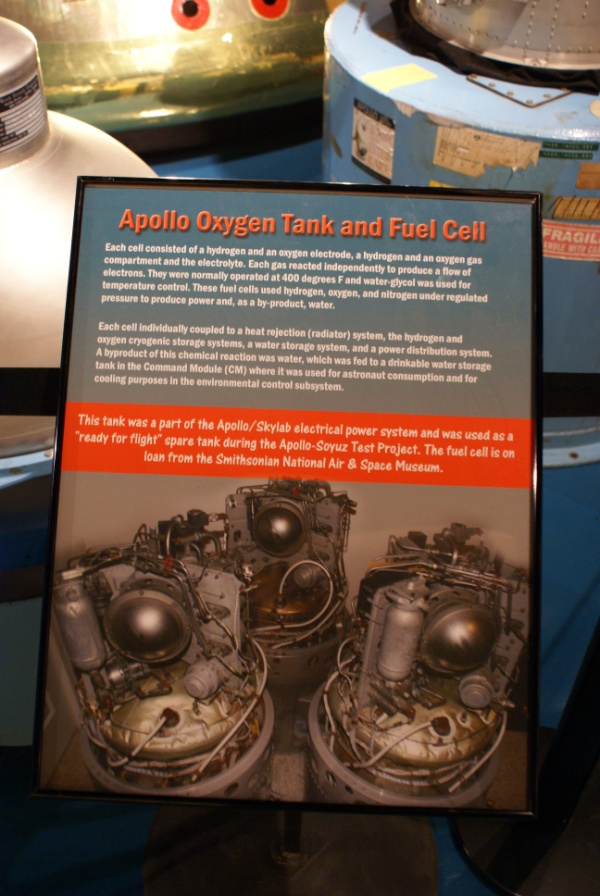| Prev |
heroicrelics.org Stafford Air & Space Museum Site Index Apollo Service Module Cryogenic Oxygen Tank Gallery |
Next |
dsc46592.jpg
The sign accompanying the oxygen tank. The sign primarily describes the fuel cell displayed adjacent to it. The sign reads
Each cell consisted of a hydrogen and an oxygen electrode, a hydrogen and an oxygen gas compartment, and the electrolyte. Each gas reacted independently to produce a flow of electrons. They were normally operated at 400 degrees F and water-glycol was used for temperature control. These fuel cells used hydrogen, oxygen, and nitrogen under regulated pressure to produce power and, as a by-product, water. Apollo Oxygen Tank and Fuel Cell
Each cell individually coupled to a heat rejection (radiator) system, the hydrogen and oxygen cryogenic storage systems, a water storage system, and a power distribution system. A byproduct of this chemical reaction was water, which was fed to a drinkable water storage tank in the Command Module (CM) where it was used for astronaut consumption and for cooling purposes in the environmental control subsystem.
This tank was part of the Apollo/Skylab electrical power system and was used as a "ready for flight" spare tank during the Apollo-Soyuz Test Project. The fuel cell is on loan from the Smithsonian National Air & Space Museum.

| Time picture taken | Thu Jul 31 10:56:22 2008 |
| Location picture taken |
Apollo Gallery Stafford Air & Space Museum Weatherford, Oklahoma |
| Picture also in | Apollo Fuel Cell |
| Prev |
heroicrelics.org Stafford Air & Space Museum Site Index Apollo Service Module Cryogenic Oxygen Tank Gallery |
Next |